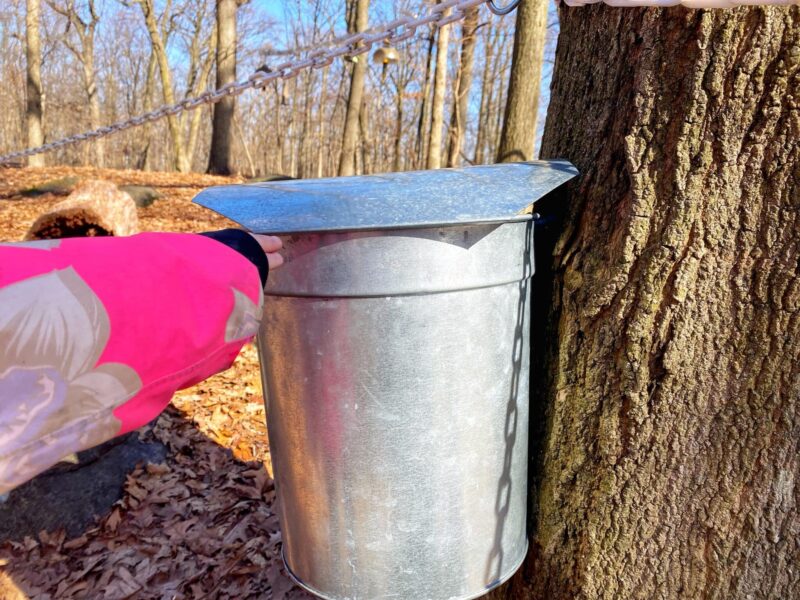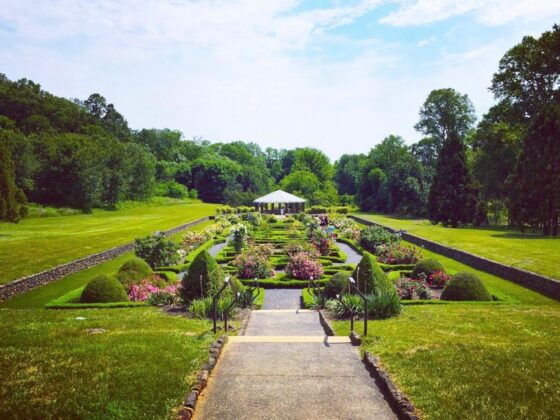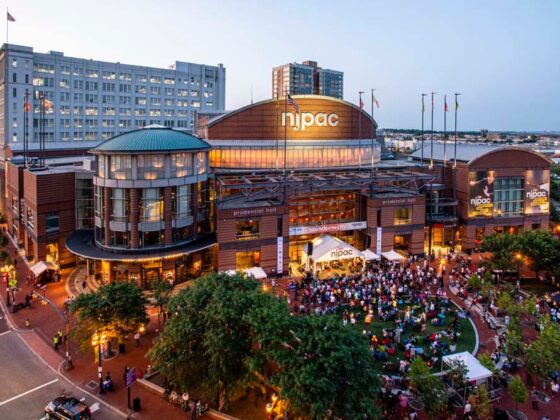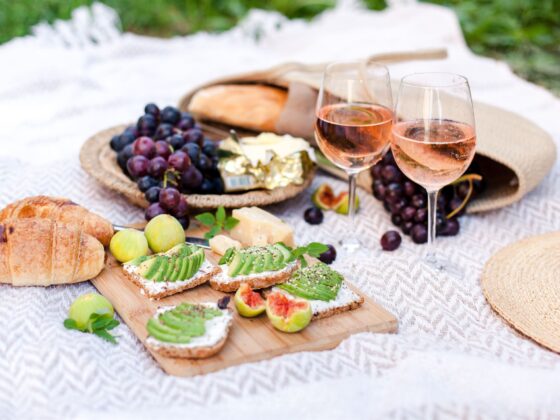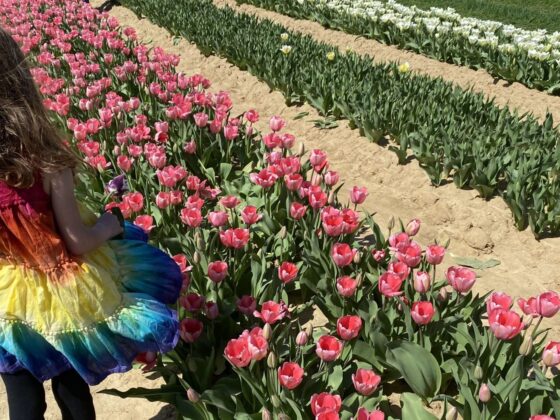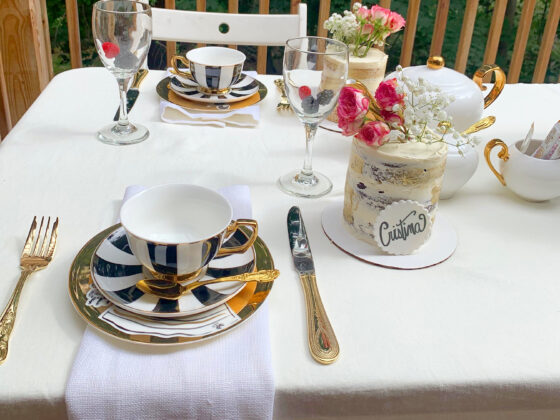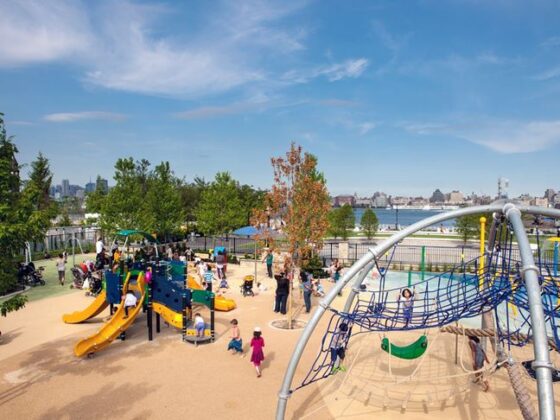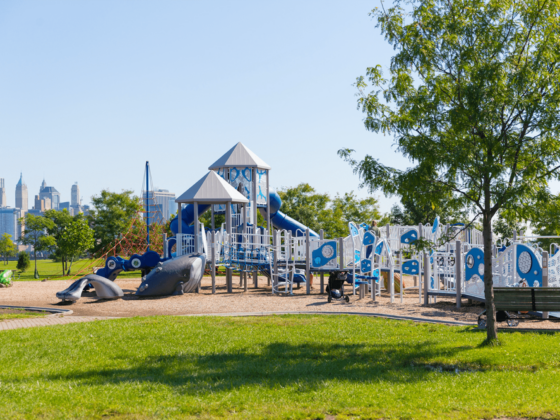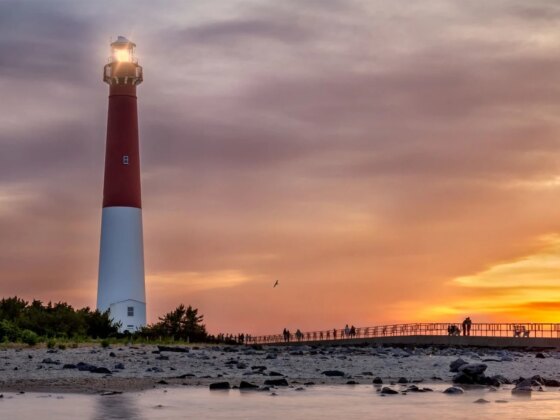My daughter loves waffles with maple syrup, and when she found out that we were going to learn about how maple syrup was made at Tenafly Nature Center, she was thrilled. We spent the afternoon identifying maple trees and understanding the conditions needed to collect sap, and we even got to taste test. Besides maple sugaring events, this non-profit, independent, member-supported nature preserve in Bergen County has a Faerie Trail, 7 miles of hiking trails, and a pond surrounded by wildlife—it’s no wonder this nature center is a go-to in New Jersey. Scroll down for more details about visiting during maple sugaring season (running every Sunday from January 19 – March 16, 2025), and if Tenafly isn’t in your area, there are plenty more places to find maple sugaring demonstrations. (featured photo taken at Tenafly Nature Center)
A Visit To Tenafly Nature Center
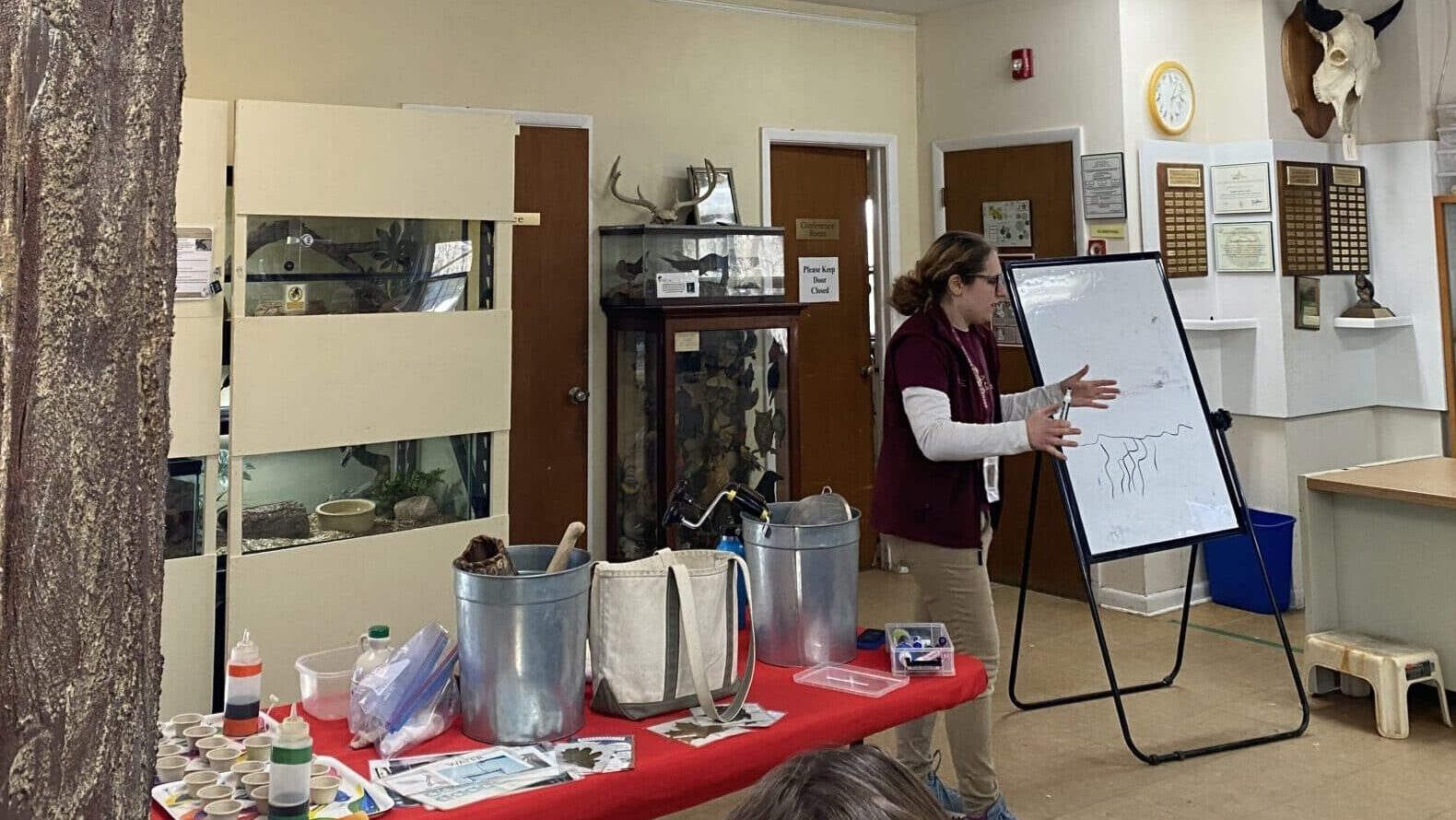
Learning about maple trees
Did you know it takes 40 gallons of sap to make 1 gallon of syrup? Before we headed outdoors, we spent some time learning about the maple sugaring process in an indoor classroom at Tenafly Nature Center. We learned that the sap needed for maple syrup is typically collected from the onsite maple trees between January and March. We were also surprised to learn that collecting sap is a tricky and weather-dependent process. To get the sap from the tree, it must be below freezing at night and above freezing during the day.

Tree tapping and sap collection
Our environmental educator explained that we can identify a maple tree by the leaves when searching for which tree to tap. But what do you do if the leaves have fallen off? Maple trees have grayish-brown bark, and while most bark peels horizontally, maple trees have an opposite pattern (vertically), so we searched based on the bark. We also learned about sap collection methods and how Native Americans collected sap from maple trees with items like birch batch baskets and deer antlers to pick up hot stones to boil the sap. It was also interesting to see how collection methods have changed (no antlers here) and how modern-day tech allows for collecting and sending the sap through tubes to a sugar shack.
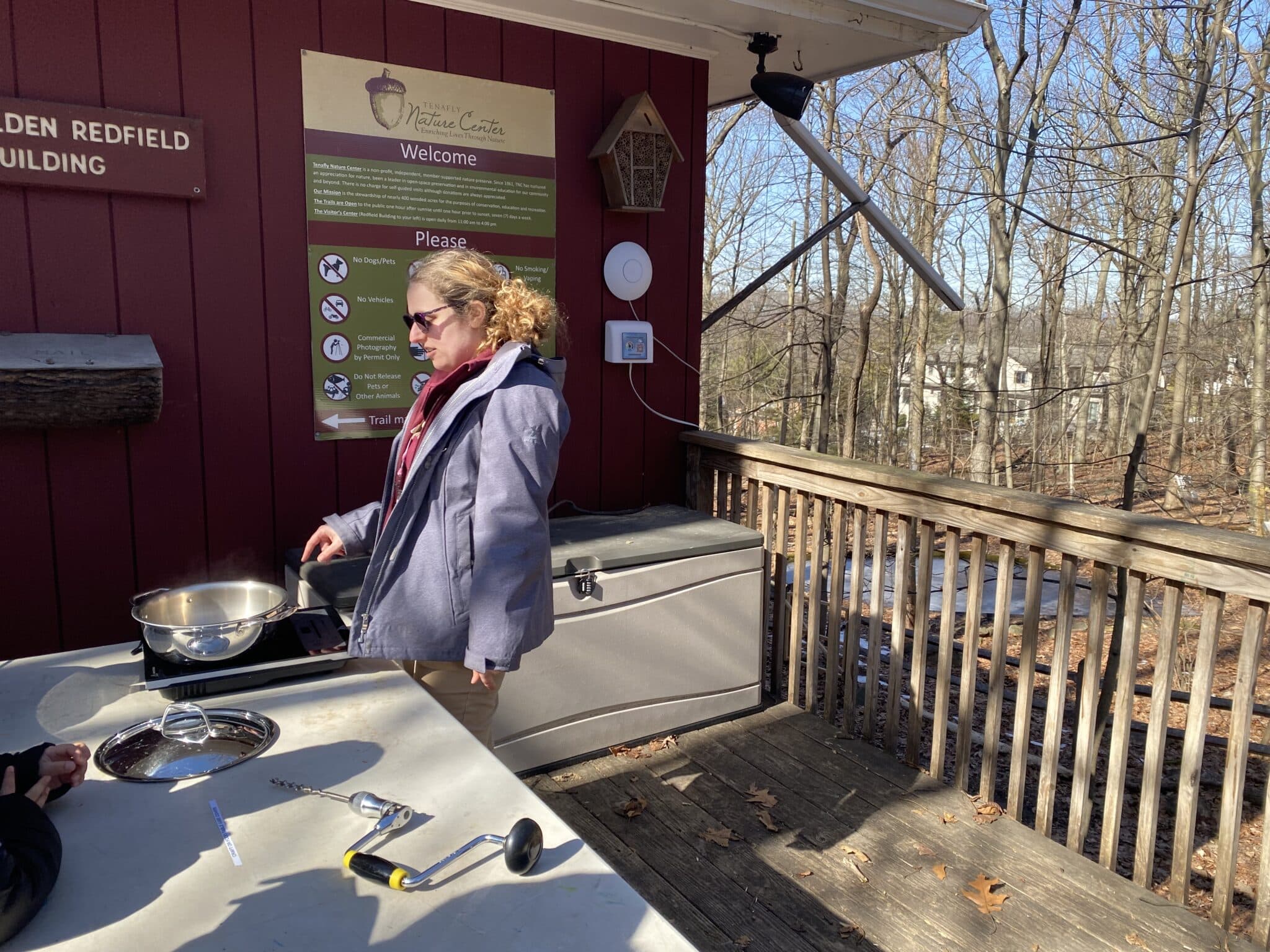
Boiling sap and taste testing
Once the sap started boiling, it produced a sweet, sugar aroma that filled the room. While the sap was boiling, we tried a blind taste test to determine which syrup was real maple syrup versus pancake syrup. We could guess right away by the rich taste of the maple syrup, and we also learned that some processed pancake syrups don’t even have any real maple syrup in the ingredients.
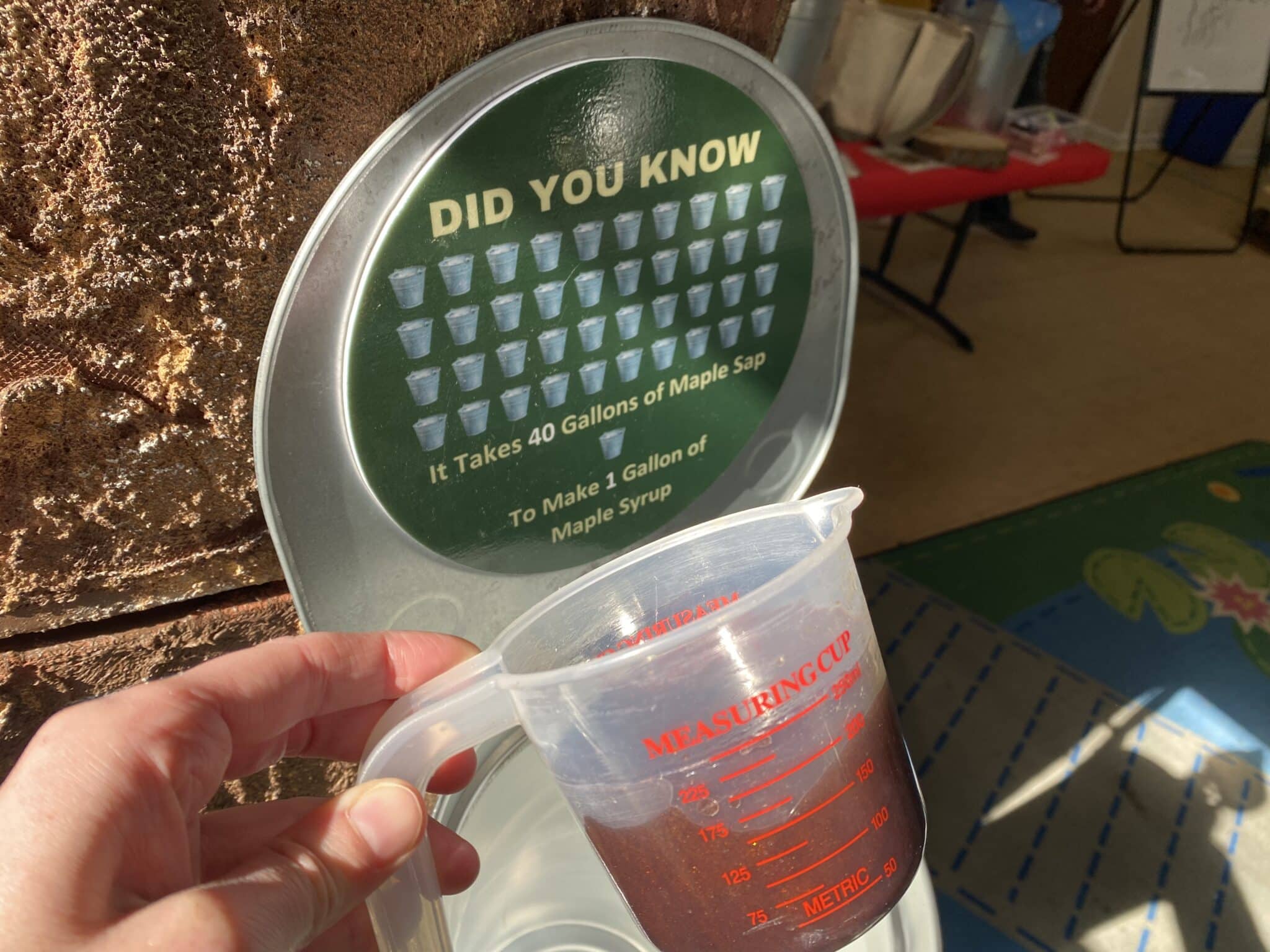
Making maple syrup
One of the most interesting facts we learned is that the same trees can be used year after year for maple sugaring. We also discovered that different grades of syrup vary depending on the time of year they are tapped. Golden sweet syrup is produced at the beginning of the season, and many candies are made from that type of syrup. Later in the season, the sap produces amber syrup, which is less sweet, and as the season ends, the syrup gets darker.
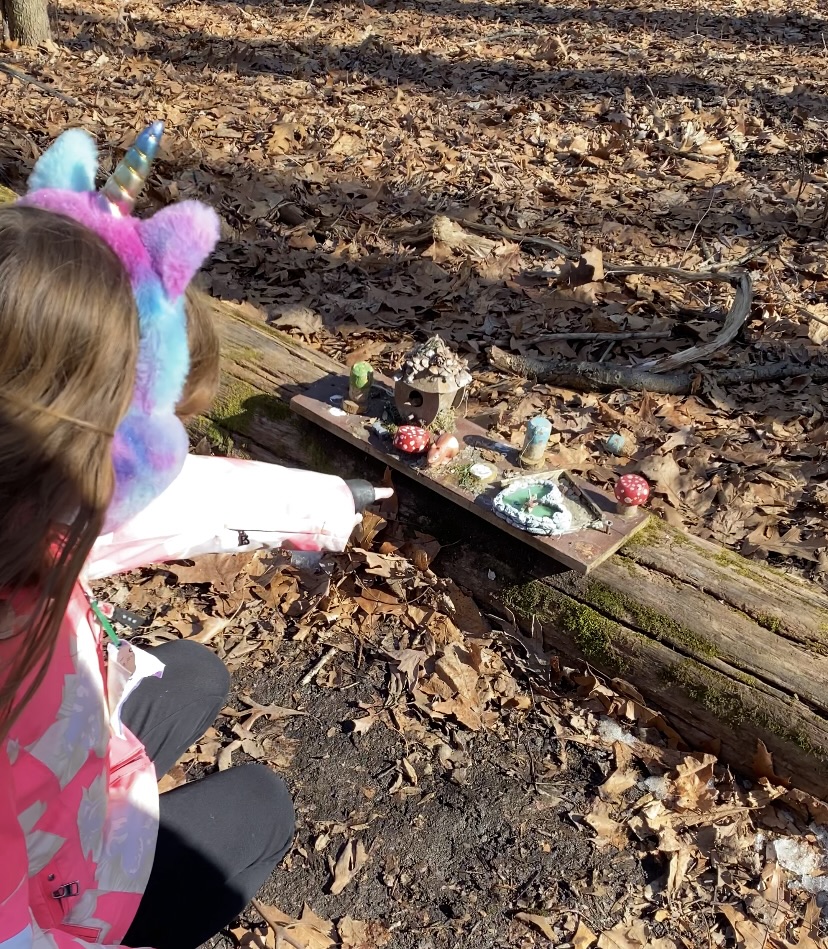
More to explore
After maple sugaring, we explored the nature center and found 7 miles of hiking trails, a large pond, and a Faerie Trail. We followed the trails until we reached the Bellflower Faerie Trail, which my daughter loved. Along the trail, she discovered colorful fairy houses, a fairy trailer, and even a two-story fairy house. It was a magical .3 miles long and had the cutest little surprises and details. The house on the large tree branch was one of her favorite moments. Beyond the Faerie Trail, we took a different path and discovered Pfister’s Pond, a picturesque area perfect for photos or for taking in some nature views. Within its nearly 400-acre expanse, Tenafly Nature Center hosts two ecosystems, areas for birding, and views for all seasons.

Things to know before you go
Tenafly Nature Center teaches over 26,000 people annually to enjoy and understand the natural world. Since 1961, they have been a leader in open-space preservation and environmental education. The center hosts events all year round, from Maple Sugaring in the winter to Spring Break Nature Camp in the spring to Family Hikes in the summer to Celebrate Fall Day in the Fall. They also host birthday parties, group programs, and Forest School, where ages 1.5-7 can learn all about the outdoors. While visiting, guests can explore trails, the Pollinator Garden, the Birds of Prey Aviary, and the Little Free Library, and younger explorers can join the Junior Naturalist program. Prices vary per program, and members get discounted rates depending on their membership type. Tenafly Nature Center is open daily except for major holidays and private events.
To learn more about Tenafly Nature Center, visit their website, Facebook, and Instagram.
Tenafly Nature Center
313 Hudson Avenue
Tenafly, NJ 07670
Become an NJMOM Insider! For all the best things to do with your family around New Jersey, sign up for our weekly newsletter delivered right to your inbox each week, and don’t forget to tag your photos #NJMOM and @njmom for a chance to be featured on our social media.

